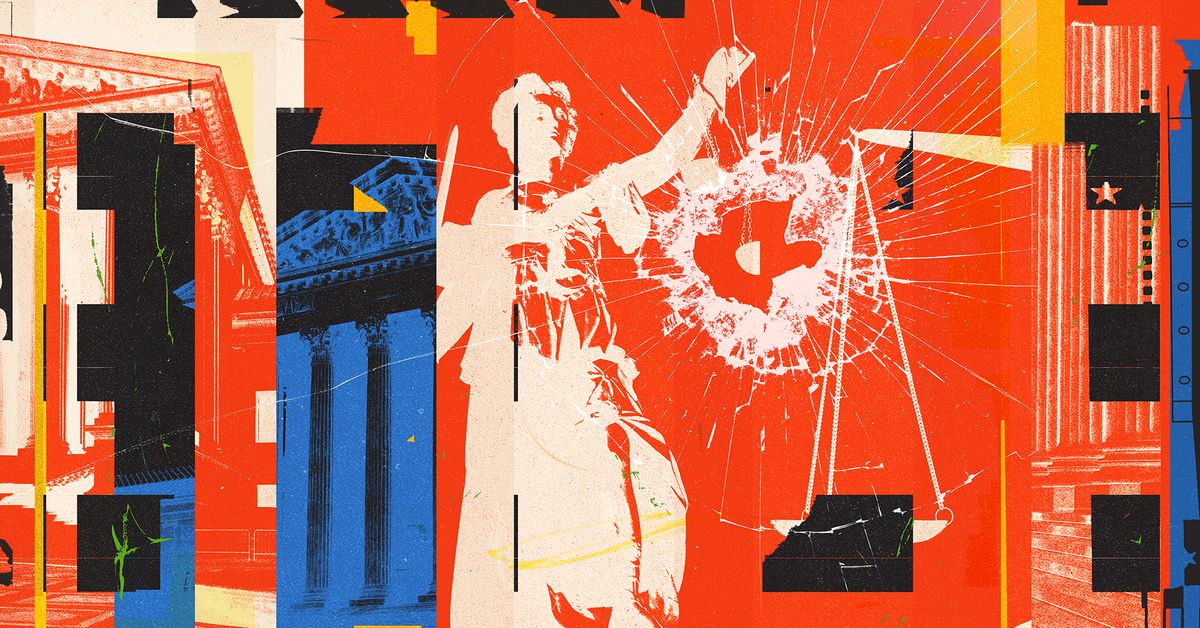Women have died from abortion bans; the full death toll will not become clear for many years to come.
This was a direct and foreseeable consequence of the election of former President Donald Trump in 2016, who oversaw the installation of three right-wing Supreme Court justices during his four years in office. The death of Justice Ruth Bader Ginsburg at the age of 87 should not have come as a shock, but denial can be a hell of a drug. A persistent 5–4 conservative majority tipped over into a 6–3 supermajority.
This is the simplest, clearest case for why you should vote. A president can set a national agenda by speaking directly to the country, and as the de facto leader of their political party, they have traditionally had a heavy influence on national policy and lawmaking. But these are largely powers that exist because of tradition, creative politicking, and the public imagination. The power to nominate federal judges, on the other hand, is a power that is explicitly enumerated in the US Constitution.
Sitting Supreme Court Justice Clarence Thomas, who is presently 76, is old as shit
And the clock is ticking. Justice Antonin Scalia died at the age of 79. Former Chief Justice William Rehnquist died at 80. Justice Stephen Breyer retired at 84 and Justice Anthony Kennedy at 82. Sitting Supreme Court Justice Clarence Thomas, who is presently 76 years old, is old as shit. (The covid-19 epidemic, among other factors, has dropped average life expectancy in the United States to 76.4 years.) A vote for president becomes a vote for the composition of the Supreme Court. The composition of the Supreme Court, in turn, determines whether your student loans will be forgiven, whether your ISP can be held to net neutrality, and whether the president is a king unbound by the rule of law.
Yet, in a sense, none of this matters very much. Dobbs v. Jackson Women’s Health Organization was 6–3. Even if Ginsburg had not been replaced by a Trump appointee, a 5–4 Supreme Court majority could have toppled Roe v. Wade. And the problem is much bigger than just the Supreme Court. The federal courts are not just nine famous people in robes — there are hundreds of appeals court and district court judges. They oversee trials, dismiss cases, unseal documents, and block laws and regulations. They can send people to prison. They can break up tech companies.
At the present rate, the current Supreme Court supermajority is many decades away from coming into alignment with the American people’s actual beliefs and values. Still, there is a ridiculously high potential for chaotic outcomes when it comes to such a small pool of people. A rogue Boeing plane door or superyacht catastrophe could immediately change the balance of power within SCOTUS.
But there is no freak accident that will fix America’s very big systemic judicial problem. During his four years in office, Trump appointed 174 district court judges and 54 appeals court judges. (Former President Barack Obama appointed only 55 appeals court judges in twice the amount of time.)
The Trump judges have blocked mask mandates, student loan forgiveness, climate regulations, and the Federal Trade Commission’s ban on noncompete agreements. The Biden administration made a lot of promises — and while Joe Biden is no FDR, his administration did actually execute on many of those promises, only to be blocked by judges. (Emboldened by this trend, the telecoms have most recently challenged the FTC’s immensely popular “click to cancel” rule in court.) Even before the Supreme Court’s shameless ruling in Trump v. US, the Trump judges have flouted judicial dignity and common sense by meddling in cases against Trump himself.
You think the Supreme Court is fucked? The entire court system is fucked.
The massive influx of Trump judges into the system was not an accident of timing. During Obama’s second term, the nation glimpsed some of this machinery in action when then-Senate Majority Leader Mitch McConnell refused to move forward with Merrick Garland’s nomination to the Supreme Court, ensuring that the seat was later filled by Trump’s appointee, Neil Gorsuch. His reasoning — that Scalia’s vacant seat should be taken by a similarly conservative justice — was not applied when he filled Ginsburg’s vacant seat with the anti-abortion Catholic conservative Amy Coney Barrett.
This was not a one-time trick. It was a strategy executed en masse across the entire federal judiciary. Republicans intentionally dragged their feet on Obama appointments and then began to approve judicial nominees at a breakneck pace when Trump entered office. “When we depart this chamber today, there will not be a single circuit court vacancy for the first time in at least 40 years,” McConnell said smugly in 2020.
The Trump judges are younger. Compared to the rest of the federal judiciary at large, they skew white, they skew male, and they skew unqualified. They comprise about a third of the appeals courts, and they have tenure for life. Their bullshit will plague us for much of our lives.
Insofar as national policy exists, it is whatever squeaks past the notice of the Trump judges
Legal observers understood at the time the enormity and lasting impact of what was happening, but few clocked that the problem was about to become exacerbated by a recursive power grab. Earlier this summer, a SCOTUS majority stacked with Trump judges overturned Chevron v. Natural Resources Defense Council, expanding the power of the federal judiciary more than ever. This, in combination with its ruling in West Virginia v. Environmental Protection Agency the previous year (expanding the “major questions” doctrine), gutted the power of the administrative state. Agency rulings — on carbon emissions, consumer protections, net neutrality — were now subject to second-guessing by any of the hundreds of jackasses in random middle-of-fucking-nowhere district courts, plopped in those seats by Trump between 2017 and 2020. Insofar as national policy exists, it is whatever squeaks past the notice of the Trump judges.
Biden’s most positive legacy may be that his administration aggressively filled the vacancies on the federal bench where it could. Aging liberal judges — including Breyer — who were holding out on retirement during the Trump administration stepped down in the last four years, timing their departures as though scared straight by the ramifications of Ginsburg’s death during the Trump administration. The judges know, too, that the judiciary has become a partisan instrument tuned to the outcomes of the presidential election.
There are, of course, proposals to pack the Supreme Court or to impose judicial term limits. The political feasibility of these options is nonzero. But they are completely dependent on electoral victories for politicians who themselves have not publicly committed to fixing the judge problem.
What this all means for you, as a voter in 2024, depends mostly on your innate temperament. Some see these facts and conclude that voting has a real impact. Regardless of what promises are made, the mere fact that the candidate has aligned themselves with a left- or right-leaning national apparatus will have a direct effect on how America is governed. A vote is not an impotent and meaningless non-choice between two figureheads who promise all kinds of things that may or may not happen; a vote does, in fact, convert to political voltage. For the optimist, this assurance is enough.
And others — like myself — see this as a vast and intractable problem that will never be solved in our lifetimes. The Republican Party has been captured by a pack of religious zealots and head-measuring weirdos that can’t be trusted to appoint a normal-brained judge. And every judicial appointee by a Democratic president from here on out is just bailing water out of the sinking ship. The judges have deemed themselves the arbiters of agency regulation, they have made themselves the referees in disputed elections, and they continue to blow up what voting rights were established by the Constitution.
Is American democracy cooked? Even for the chronic pessimist, there’s value in voting. Political action is not limited to the presidential election, and neither is voting mutually exclusive of anything else. Every four years, you are offered the opportunity to weigh in on a court system that has been vandalized intentionally, maliciously, and gleefully. A vote can be a hopeful affirmation, an act of desperation, an expression of pure spite. A ballot is one way to say, I dissent.













